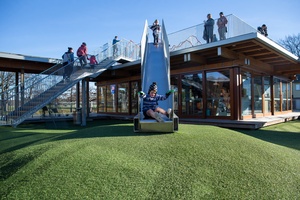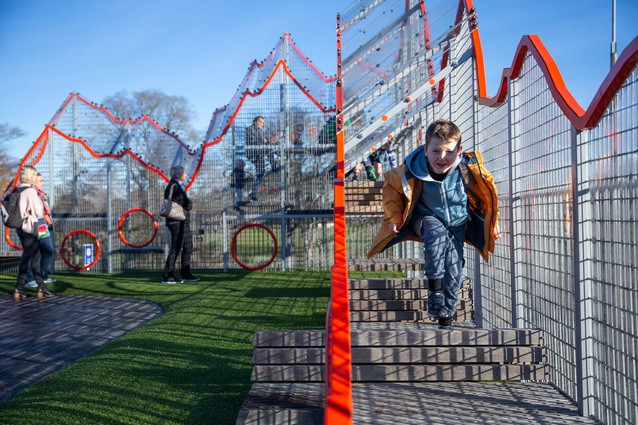Engaging Christchurch through architecture
The team behind Christchurch’s highly-attended biennial Festival of Transitional Architecture (FESTA) has evolved into Te Pūtahi – Christchurch Centre for Architecture and City-making, a charity that is committed to the ongoing regeneration of the Cantabrian city. This winter, Te Pūtahi has organised a series of 11 events over 11 weeks called Open Christchurch, with the aim to engage industry professionals and the public alike with the city’s architecture.
Spanning from 30 June to 7 September, Open Christchurch features open days with special access to three very different inner-city school buildings. Te Pūtahi director and architectural historian Dr Jessica Halliday talks with Ashley Cusick about the role of architecture in post-quake Christchurch and how the Open Christchurch events might play in to city-making.
Ashley Cusick (AC): What led you to be a part of an organisation like Te Pūtahi? How has having an organisation dedicated to city-making affected Christchurch post-quake?
Jessica Halliday (JH): Establishing a centre for architecture has been my life goal for more than 10 years, so it’s something I’ve always wanted to be part of. It’s challenging to assess the impact of our activity. We know FESTA has brought tens of thousands of people into Christchurch’s centre to simply enjoy the city transformed by temporary works of architecture. Now we’re beginning to see and understand the power of events based on experiencing and discovering the permanent works of architecture and new and revived public spaces, and what they can do for building a sense of place and people’s connection to place.

We need a range of events and programmes that give people the opportunity to engage with this place, to recognise that the way our cities are designed plays a huge part in determining how we live and well-designed buildings and public spaces can improve our lives. But, what “well-designed” is, isn’t the same for everyone. This place needs to be a place where more and more people see themselves reflected in the buildings and public spaces and feel welcome.
We also know the design of our cities has a huge part to play in the future of the planet, climate breakdown and the possibility of regeneration. We hope Te Pūtahi has a growing role to play in this wider public conversation. We believe that great cities are places where everyone can participate and life can flourish; we do what we do to contribute to Christchurch being a great city for all.
AC: What has the response been like to city-making/community building through architecture in Christchurch since the earthquake? How have you seen these areas grow?
JH: I have to be honest and say it’s been varied. Designing and creating ‘architecture’ is such a broad range of activity. And, the whole spectrum from formal and permanent to informal and temporary can either contribute meaningfully to community development or fail dismally. I think it is important to recognise what does work and why and encourage more of that, and also to get more and diverse people to assess and contribute to the discussion and decision-making.
AC: What role is architecture and design playing in rebuilding not just the physical space of Christchurch but also the community/wider society?
JH: Well-designed physical space can support and amplify community building, and poor processes and bad design can confound and hinder a sense of place and belonging. I recently walked around the city with a group of second year political science students. One of them told me that her friends and family from the east side of Christchurch felt alienated by and excluded from the central city – that it simply didn’t make them feel welcome or that they belonged there in any way. We didn’t have enough time to delve into the what and the why of what she told me, but I keep coming back to this. Yes, it’s anecdotal; I haven’t researched or looked into it closely, but it still tells us about the power of architecture and urban design to include some people and exclude others.
It’s no surprise that the most popular buildings and places in Christchurch are for the public and that you can walk in and around them or use them without the need to buy anything to justify your presence there: Tūranga, Tākaro a Poi/Margaret Mahy Playground, the Gap Filler pump track and swings.

AC: What is the aim of the Open Christchurch events? Who are they designed for?
JH: To give people the opportunity to have a conscious and direct experience of architecture and to consider how the way our cities are designed plays a huge part in determining how we live. Architecture can bring both pleasure and enrich lives, as well as frustrate and create disappointment and inequity. We hope Open Christchurch encourages people to debate what “well-designed” means, to enter into public dialogue and ultimately, contribute to shaping the decisions made about our places and cities.
The programme has been designed with a range of audiences in mind – but first and foremost, the people who live in greater Christchurch. They’re designed for the people who live here to learn about this place. The open building events are free to attend and the schools are fully accessible, so we hope everyone feels welcome.
AC: What has the initial response been to the Open Christchurch events so far?
JH: Warm and joyful so far! Five hundred people came to the open building event at Tezuka and Barrie’s Cathedral Grammar Junior School and, oh boy, did they love exploring the building, zooming down the slide and crawling through the sky playground. It was really rewarding to see the amount of pleasure a well-designed place can bring. The two guided walks we’ve held so far have also been well received. Christchurch is an interesting place – there are lots of different ideas, technologies, social and educational movements, crafts and history to learn about through the open buildings and the guided walks.
Open Christchurch runs until 7 September 2019. The next building open day is on Sunday 4 August at Christ’s College Memorial Dining Hall, and it is free to attend: find out more here. See a full list of events here.













